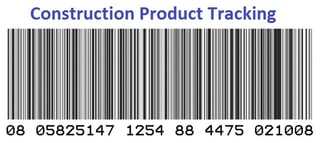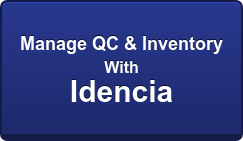
Given the engineering-intensive nature of manufacturing prestressed concrete structures... and the high degree of documentation required to maintain quality control records... anything that helps manage paperwork provides a natural benefit to the industry. Prestressed concrete manufacturers have taken a page from the retail industry and are starting to adopt bar code tracking to do this.
There are three primary drivers behind the move to bar code tracking:
1. Make information product-centric.
The biggest time- and money-sinks created by paper-based filing are caused by time wasted looking for information about the same product in different places. There is a file for the product; another file for the concrete test information; and yet another for the engineering tests... you get the picture. Sometimes these are stored in separate rooms. In any event, they are never stored where you are when you need them.
Bar code tracking can be used to create a digital system of paperless quality control. The primary advantage of this is access to QC information from anywhere simply by looking up the product or job for which it was made. As one producer expressed to us:
"I want a folder for each product where I can access all information related to that product."
The digital information collected can also be used to automatically create reports that can be delivered electronically. Idencia has customers in Texas who use the system to automatically create DOT reports that would otherwise have to be prepared by hand.
2. Create serial numbers that reflect product numbers created in scheduling.
Every company has its own system for creating product numbers in its scheduling system. One advantage of bar codes over RFID tracking is that they can be printed on the shop floor. So, the unique product number created for each custom product in scheduling can be reflected in the bar code number. This saves the time required to stencil or otherwise label the scheduling number after manufacture. And, scanning (rather than reading) reduces the possibility of human error.
3. Manage inventory more efficiently.
Serving as a digital serial number on each product, the bar codes can be scanned to manage inventory in various ways:
- Track stage of inventory; i.e. in each stage of manufacturing or as finished goods
- Locate inventory stored in yard on a GPS map
- Take physical inventory by scanning
- Produce electronic shipping records by scanning
Managing inventory is becoming a bigger issue as the market improves. You can read more about this in our prior post The Instant ROI of Product Tracking.
Most companies that move to bar codes or RFID tracking look back on the decision much the same way most of us now view living without the internet. How did we ever manage without it?
About Idencia
Our purpose at Idencia is to offer infrastructure asset tracking solutions that improve productivity throughout the infrastructure value chain.. to create lean infrastructure. Our subscription offering applies RFID tracking to infrastructure products from the time of manufacture through end-of-life. As a cloud-hosted product tracking system that is seamless between manufacturers, contractors and asset managers, Idencia adds information value to all, eliminates redundancy and saves time. If you would like to learn how Idencia can help your company, we invite you to download our Idencia Deck by clicking below.

Oct 22, 2016 5:24:43 PM




Comments